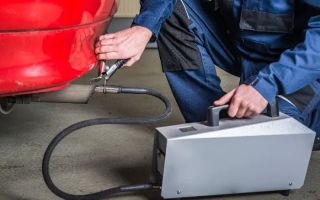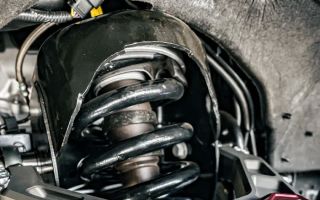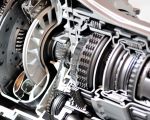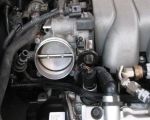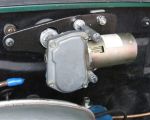Troubleshooting Electrical Issues in Your Car
1. Understanding Car Electrical Systems
As someone who's been driving for years, I’ve faced my fair share of electrical issues in my car. Electrical problems can seem mysterious, and when your car isn't starting or you experience flickering lights, it's easy to panic. But understanding the basics of how your car's electrical system works can help you troubleshoot and possibly fix these issues on your own.
Your car's electrical system consists of several key components that work together to power your vehicle’s functions. The battery provides the initial charge to get your car started, while the alternator takes over once the engine is running, ensuring that the battery stays charged. The alternator also powers electrical systems like lights, air conditioning, and your vehicle's dashboard. The electrical system also includes fuses, wiring, relays, and control modules, all working in sync to keep things running smoothly.
If any of these components fail or malfunction, it can cause a range of problems that affect your car’s performance. Electrical issues can manifest in many ways, such as dimming headlights, a dead battery, a malfunctioning radio, or even the complete failure of the vehicle to start.
2. Identifying Common Electrical Issues
Over the years, I’ve experienced various types of electrical issues with my car, some more frustrating than others. Let me walk you through some common problems and how you can identify them.
Dead Battery: This is one of the most common electrical issues I’ve encountered. If your car is refusing to start and you hear a clicking noise when turning the key, it’s likely the battery is dead. Sometimes, the dashboard lights will dim or fail to light up altogether when the battery is weak. If you notice these signs, it might be time to check or replace the battery. The first step I take is to use a multimeter to test the battery voltage. A fully charged battery should read around 12.6 volts when the car is off. If it’s much lower, the battery is likely the issue.
Alternator Issues: If you notice your headlights dimming or flickering as you drive, or if your dashboard lights become unusually bright and then dim again, it could mean the alternator is failing. The alternator keeps your battery charged, and if it’s not working properly, your car will eventually lose power. In this case, it’s worth testing the voltage output of the alternator using a multimeter. You should see around 13.8-14.4 volts when the engine is running. If you’re getting lower readings, the alternator might need to be replaced.
Fuses and Wiring Problems: Another issue I’ve encountered is blown fuses or faulty wiring. A blown fuse will cause a specific electrical system to stop working. For example, if your headlights won’t turn on, it could be due to a blown fuse. I always start by checking the fuse box and replacing any blown fuses. Faulty wiring, on the other hand, can be trickier to diagnose, but you might notice strange electrical behavior—like flickering lights or intermittent issues with electrical components—that could indicate damaged wires.
Starter Motor Problems: Sometimes, a car’s electrical issues stem from the starter motor. If you turn the key, and the engine doesn’t crank or only clicks once, it could be the starter motor malfunctioning. I’ve learned that this often means there’s an issue with the solenoid or the starter motor itself. It’s worth inspecting these parts for wear and tear, especially if they’ve been in use for a long time.
3. Tools and Techniques for Troubleshooting
Once you’ve identified a potential issue with your car’s electrical system, the next step is to troubleshoot and determine whether it’s something you can fix on your own or whether you’ll need professional help. Let me share some tools and techniques I use when diagnosing electrical problems in my car.
Multimeter: One of the most useful tools for troubleshooting electrical issues is a multimeter. I use it to check the voltage of the battery and alternator, which is often the first step in diagnosing the problem. A multimeter can also help test continuity in wiring and fuses. By setting the multimeter to the appropriate settings, you can easily check whether a fuse has blown or if there’s a problem with the alternator’s charging ability.
Visual Inspections: Sometimes, a simple visual inspection can reveal obvious issues. I always check the condition of the battery terminals to see if there’s corrosion. Corroded battery terminals can prevent proper charging and lead to electrical failures. I also inspect the alternator belt to ensure it's tight and not showing signs of wear.
Fuses and Relays: If your car’s electrical components aren’t working, it’s worth checking the fuses and relays. These components act as safety mechanisms that prevent electrical overloads. I make sure to check the fuse box for any blown fuses and replace them with new ones. If you notice that the same fuse keeps blowing, it could indicate a deeper issue with your electrical system.
4. Real-Life Experience with Electrical Issues
Let me tell you about a time I found myself stranded on the side of the road because of a sudden electrical issue. One evening, as I was driving home from work, my headlights began to flicker. At first, I thought it was nothing, but then I noticed that the dashboard lights started acting strangely, too. I knew something was wrong with the electrical system, so I pulled over to the side of the road.
After a quick visual inspection, I saw that the battery terminals were corroded. This corrosion was preventing the battery from receiving a full charge from the alternator. Fortunately, I always carry some basic tools in my car, so I used a wrench to clean the terminals and reattach the cables. After a few minutes, the lights seemed to return to normal, and the car started without a problem. I was able to drive home safely, but this experience taught me the importance of regular checks on the electrical system.
In other cases, I’ve had to call for help when the alternator failed completely while I was driving. I reached out to a reliable towing service, Rescue & Towing, and they quickly sent a tow truck to bring my car to a nearby mechanic. The alternator was replaced, and the car was up and running again in no time. It's always helpful to know that there are services out there to assist when things go wrong.
5. When to Call a Professional
While some electrical problems can be fixed with basic tools and troubleshooting, others require a professional’s expertise. If you’ve tested your battery, alternator, and fuses and still can’t pinpoint the issue, it’s a good idea to call a mechanic. Electrical issues can sometimes be caused by problems that are difficult to diagnose without specialized knowledge and equipment.
If your car is experiencing repeated electrical failures or if you suspect a more serious underlying issue, don't hesitate to contact a trusted towing service or mechanic. I’ve always found that having a professional take a look can save me a lot of time and money in the long run.
Additionally, if you find yourself stranded in the middle of nowhere or in an unsafe location, it’s always best to call for roadside assistance or towing services. The team at Rescue & Towing provides reliable and fast assistance, no matter the situation. They’ll make sure your car is towed to a safe place, and you can get the help you need.



